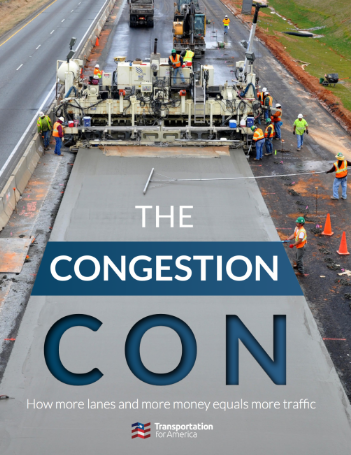From Atlantic Cities:
Transit and highway authorities often view one another as competitors in the race for urban transport dollars, what with transportation funding increasingly harder to come by, but in metropolitan Tampa they’re making a rare go at a partnership. The Tampa Hillsborough Expressway Authority and Hillsborough Area Regional Transit have teamed up to concoct a new mobility concept that would pay for transit bus operations with expressway toll dollars — an idea being called “bus toll lanes.”
“There’s a history of each of us working in terms of our own silos and building walls so one can’t cross over to the other,” says Joe Waggoner, chief executive of the expressway authority, of highway and transit interests. “I’m challenging some of my toll friends and some of my transit friends to think outside their own typical paradigm.”
The name “bus toll lanes” might not sound too innovative, but the approach is sure to turn some heads. The structural foundation of the BTL concept is a special expressway corridor that gives first priority to transit buses. Once the buses get rolling, the remaining road space is sold to drivers at toll fees designed to eliminate congestion and maintain high speeds and steady flow.

(Transit wonks might notice some similarities between bus toll lanes and both BRT and HOT lanes, though there are some critical differences. Proper BRT corridors or busways separate buses from car traffic, while the two run side-by-side in a BTL corridor. HOT lanes generally permit carpoolers to travel for free, while a car with four people and another with one pay the same in a bus toll lane.)
“It’s a means of creating additional people-moving power and mobility, and doing it in a financially new and sustainable manner,” says Waggoner. “I pitch the concept as ‘giving transit a new farebox.'”
In May, the two Tampa authorities released a preliminary feasibility study of BTL service [PDF] based on traffic models for the metro area. The estimated congestion savings were quite significant: even with buses running every 10 minutes, the models suggested a 187 percent increase in traffic compared to current highway conditions. At the other end of the spectrum, even if buses ran every minute, toll-paying drivers still had access to 90 percent of corridor capacity.

The revenue forecasts were even more staggering. In all three corridors modeled for the study, which ranged from 45 to 65 miles in length, the tolls collected by the BTL system paid for 100 percent of the cost of operating and maintaining the transit buses. For the 65-mile route, in particular, the feasibility study estimated a 30-year net revenue of roughly $1.5 billion — an enormous return on an estimated initial transit grant of $323 million.

“In terms of ability to cover [operating and maintenance] costs in the future, it exceeds anything that’s been proposed to date,” says Waggoner. He hopes the two Tampa authorities can submit a joint proposal to the Federal Transit Administration sometime this fall for a pilot project that could be up and running within a couple years.
Of course plenty of obstacles stand in the way of that goal. The most immediate is whether bus toll lanes actually qualify for federal transit funding. At issue is whether BTL meets the definition of a “fixed guideway system” in the eyes of the FTA’s main two capital investment programs: Small Starts and New Starts. Waggoner believes the idea meets the criteria for Small Starts grants and thinks there’s a good case for a New Starts grant, too, though he adds “that’s not quite as clear.”
Another problem is that many HOT lanes around the country aren’t generating nearly the amount of revenue that studies initially projected. Since the entire premise of BTL is that road revenue pays for the bus service that justifies the initial investment, poor toll projections could undermine the entire venture. Waggoner insists Tampa’s revenue estimates are “conservative” and says the bond market (which would back some of the capital costs) routinely distinguishes good toll projections from poor ones.
Finally there are a flurry of smaller concerns from the perspective of urban mobility. Building new expressway lanes instead of converting existing ones is the wrong way to promote transit and may make congestion worse. Dropping free carpool travel might encourage single-occupancy driving (though it would decrease the cost of HOV enforcement considerably). Using FTA grants to pay for car lanes could look like — or, in the wrong hands, end up becoming — a way to fund roads under the guise of transit improvement.
No transportation funding mechanism is without its flaws. Tampa’s plan may overcome all or some of these hurdles between now and the time the pilot project is done. Even if it doesn’t, however, the players involved have given states and metro areas around the country a funding model to adapt as they see fit, at a time when many are looking for just that.





